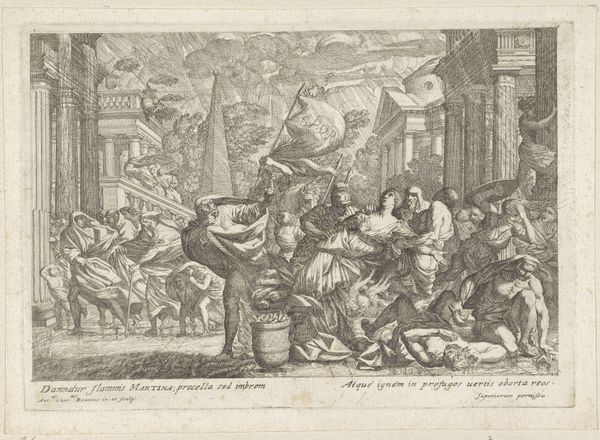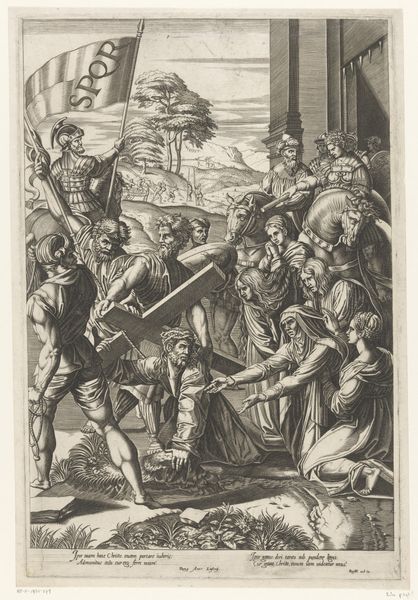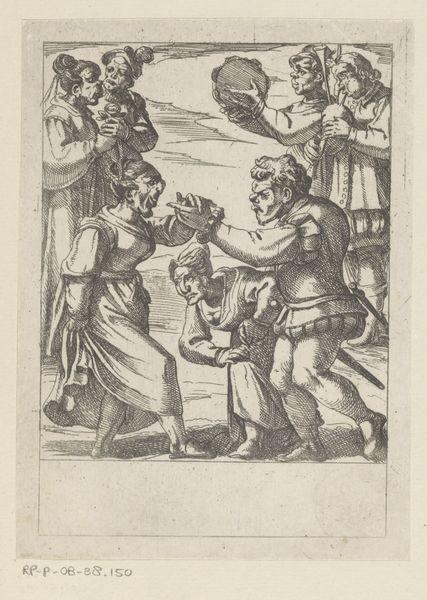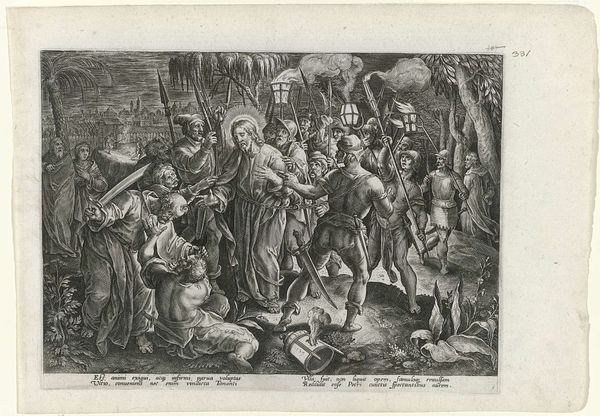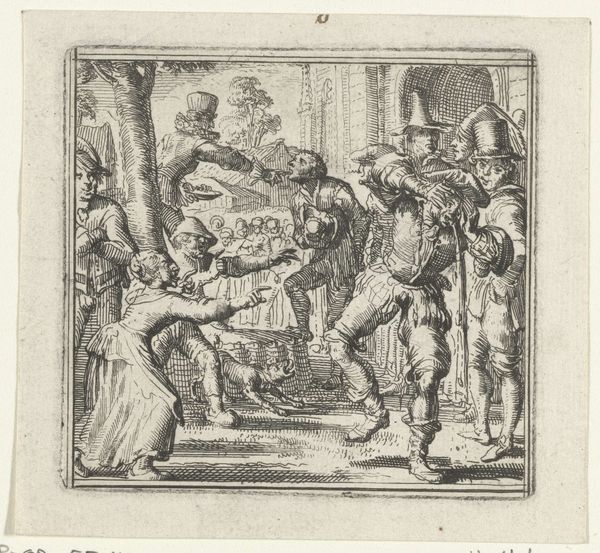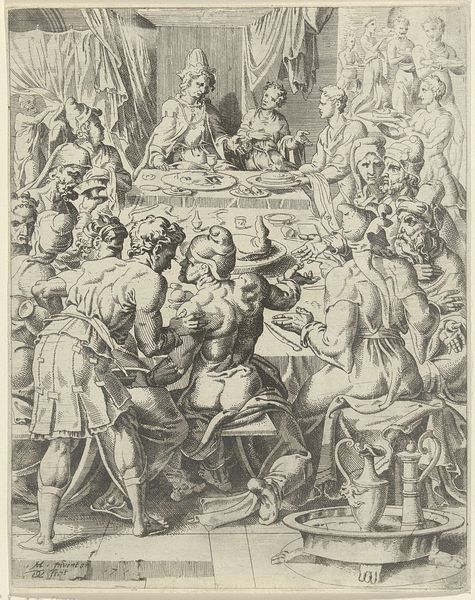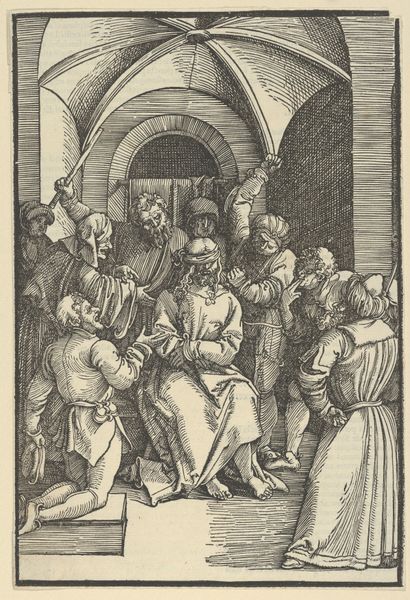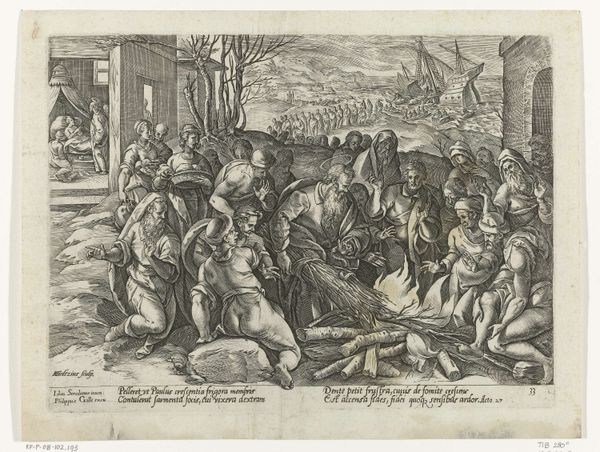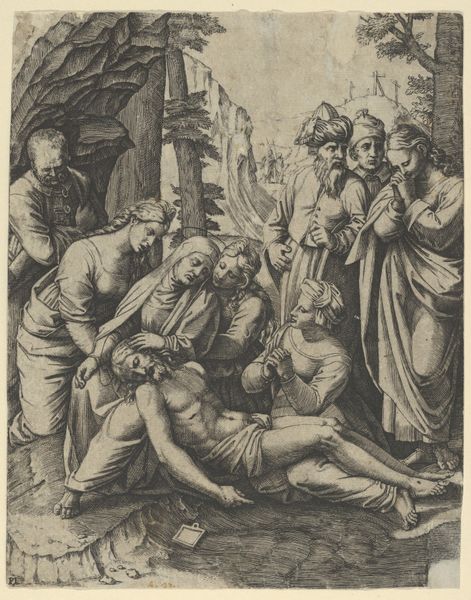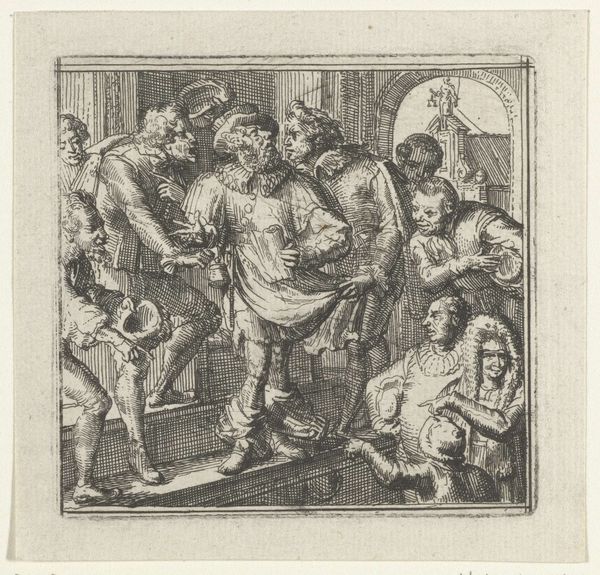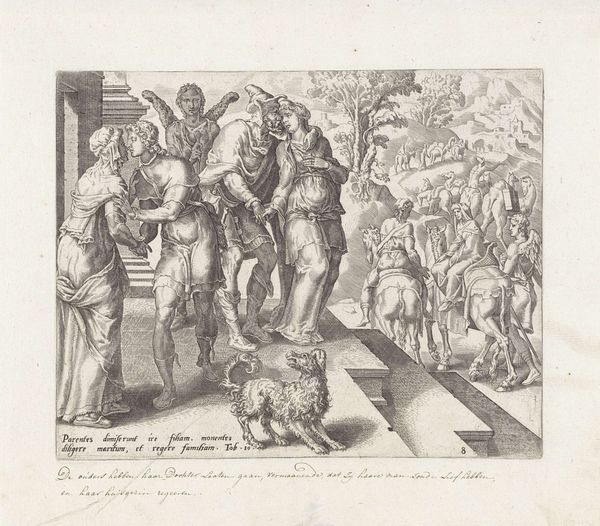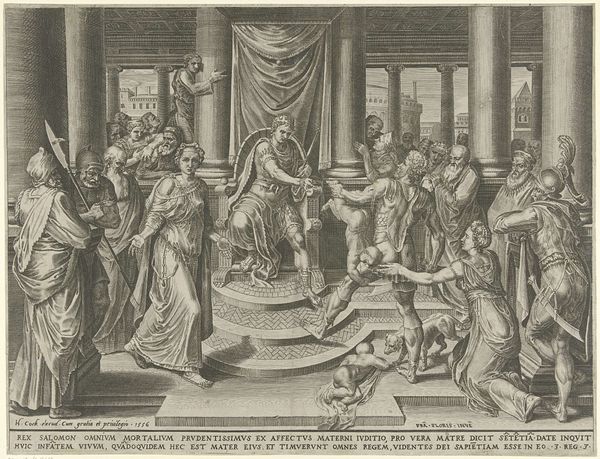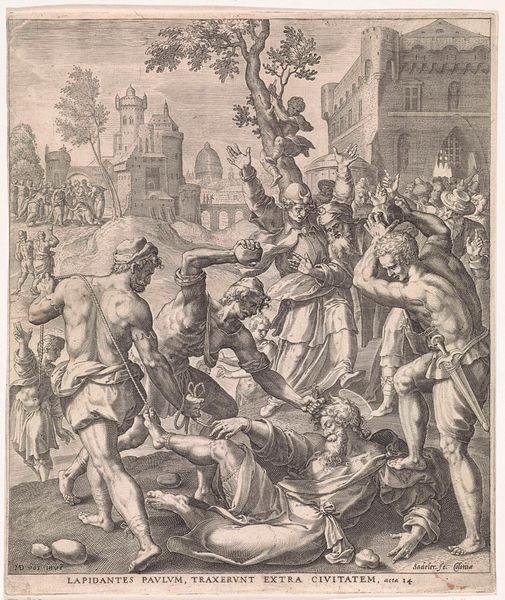
drawing, print, paper, engraving
#
drawing
#
pen drawing
# print
#
old engraving style
#
figuration
#
paper
#
history-painting
#
italian-renaissance
#
engraving
Dimensions: 185 × 174 mm (plate); 188 × 178 mm (sheet)
Copyright: Public Domain
Curator: Here we have Domenico Campagnola's 1517 engraving, "The Beheading of Saint Catherine." It's currently held here at The Art Institute of Chicago. Editor: Wow, even knowing the title, the composition feels incredibly unsettling. There's almost a casual chaos in the arrangement, isn't there? A dog napping at the foot of the platform really lightens the atmosphere, almost in bad taste? Curator: The chaos you perceive aligns with a broader trend in early 16th-century art where artists were exploring increasingly complex compositions. There's also a marked departure from the serene idealism of the High Renaissance towards more dramatic, almost Mannerist, sensibilities in depicting historical and biblical scenes. Editor: I see what you mean, and I’d never argue against any drama! But doesn’t this come across a bit...voyeuristic? The mix of fascination and detachment is strange. The naked guard, Catherine kneeling... there's definitely something about the performance of power happening. Curator: Indeed. It's crucial to remember that prints like these played a vital role in disseminating images and ideas across Europe. This allowed for the distribution and discussion—even the sensationalizing—of saintly lives and martyrdoms, especially in light of the religious upheavals of the Reformation. Consider how these images reinforced specific moral and religious positions. Editor: Good point. And Campagnola’s choice of engraving seems deliberate here—that line work, for a beheading, brings a different charge compared to the way oil on canvas would. It also highlights the sort of commercial availability to prints. Curator: Precisely! And we see the beginnings of art's power of propaganda, using easily mass-produced engravings that carry narrative messages beyond religious art alone. The way he used line also speaks to Campagnola’s exploration of depth and shadow—an intriguing balance between horror and a sort of artistic detached study. Editor: Mmh, it's unsettling, no doubt. It makes you reflect not just on Catherine, but also the crowd. All those extras in attendance. Makes me wonder what kind of person would show up to an event like that and makes me wonder how society even permits such public barbarism? It really leaves you wondering, doesn’t it? Curator: It truly does, especially given its role in broader cultural and social frameworks. It's images like this that push us to consider those histories and how our institutions curate such difficult narratives even today.
Comments
No comments
Be the first to comment and join the conversation on the ultimate creative platform.
